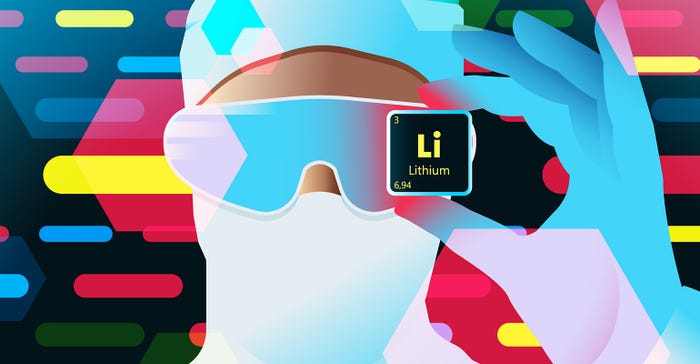Researchers Get Creative with Alternative Battery Technologies
While pressure on the battery industry increases, the industry is exploring new types of battery tech.
July 6, 2023

Undoubtedly, the battery industry is under immense pressure unlike any time before in its history. Today, there is a growing demand for better batteries, including with increased capacity, greater sustainability, higher reliability, and lower cost. Additionally, the wide variety of applications for batteries has shown that conventional lithium-ion batteries are not always a suitable solution.
While a large percentage of the industry is steadfastly focused on further building out lithium-ion battery technology and infrastructure to answer this call, there is a small but growing contingency of people looking for different solutions. Much of the focus here is on alternative battery chemistries, such as lithium-iron-phosphate or silicon-anode tech.
Within this, groups are looking at even more novel concepts, such as the Italian Institute of Technology (IIT) which is exploring batteries made from food, Texas A&M which has been researching batteries based on water, and Argonne National Laboratory, which has developed a battery that uses flouride. Other groups, such as researchers from the University of Oldenburg, have been exploring lithium-air batteries which have a theoretical capacity that is ten times that of a conventional lithium-ion battery, Accenture, a company exploring the promise of sodium-ion batteries, and the University of Maryland, which has developed a biodegradable battery electrolyte made from crab shells.
In this piece, we’ll explore the alternative battery solutions from the IIT, Texas A&M, and Argonne to better understand alternative battery technologies being explored in the industry.
Batteries made from food
One of the more interesting developments in the field of alternative battery technology comes from the Italian Institute of Technology which has been developing batteries that are made from food.
Inspired by biochemical reactions that naturally occur inside human beings, the IIT battery is made from several standard and edible materials. Specifically, the researchers designed a battery that uses riboflavin (vitamin B2) as the anode, and quercetin (a food supplement) as the cathode. Along with these, the battery has a water-based electrolyte encapsulated in beeswax, a separator made from nori seaweed, and contacts made from food-grade gold.
As described in their paper entitled “An Edible Rechargeable Battery,” the resulting battery provided a nominal voltage of 0.65V and a continuous output current of 48 uA for 12 minutes. Alternatively, in a setup with an LED, the researchers showed that their battery could also last for over an hour while providing microamps to a low-power LED.
According to the researchers, the developed edible batteries can have major implications in several unique fields where traditional batteries won’t suffice. Specifically, they envision the batteries serving in applications such as devices for the diagnosis and treatment of GI tract diseases as well as food monitoring.
Batteries based on water
Recently, researchers from Texas A&M University published a paper in Nature where they describe new findings in the world of water-based batteries.
In this study, the researchers sought to better understand the performance of redox-active non-conjugated radical polymers for use in aqueous batteries. In these kinds of batteries, the cathode and anode consist of the polymer material while the electrolyte is an aqueous solution, which is essentially water mixed with organic salts.
In their study, the researchers mixed the electrolyte water with different kinds of organic salts to understand this impact on the electrolyte and battery performance. What the team found was that, based on the salts used, the capacity of the water-based battery can vary significantly - as much as 1000%.
With this new understanding, the researchers have gained a battery insight into the machinations of water-based batteries, and hope to use this information to design better and more performant aqueous batteries in the future.
Batteries made with fluoride
We recently reported on research at Argonne National Laboratories, where scientists have discovered a fluoride electrolyte that could protect a next-generation lithium-metal (Li-metal) battery against performance decline. Li-metal batteries offer twice or more energy stored in a given volume or weight than lithium-ion—but their high energy density declines rapidly with repeated charge and discharge.
Argonne researchers discovered that when a Li-metal battery is used with an electrolyte containing not the usual salts and solvent but rather a solvent containing fluoride—the same substance in toothpaste that strengthens the enamel layer of users’ teeth—greatly multiplies the number of successful charge-discharge cycles. It does it by creating a robust protective barrier on the li-metal anode and NMC cathode.
An alternative future
The battery industry is under pressure to design batteries that are not only better but also ones that serve a multitude of unique applications. To meet these needs, researchers in the battery industry are turning to alternative battery technologies for solutions. Between the food-based battery developed by the IIT researchers, the new findings regarding water-based batteries from Texas A&M, and Argonne’s work in fluoridated electrolyte, it’s clear that the alternative battery tech is gaining traction and moving in the right direction.
Click through for more on these and other novel battery technologies.
About the Author(s)
You May Also Like

.jpg?width=300&auto=webp&quality=80&disable=upscale)

